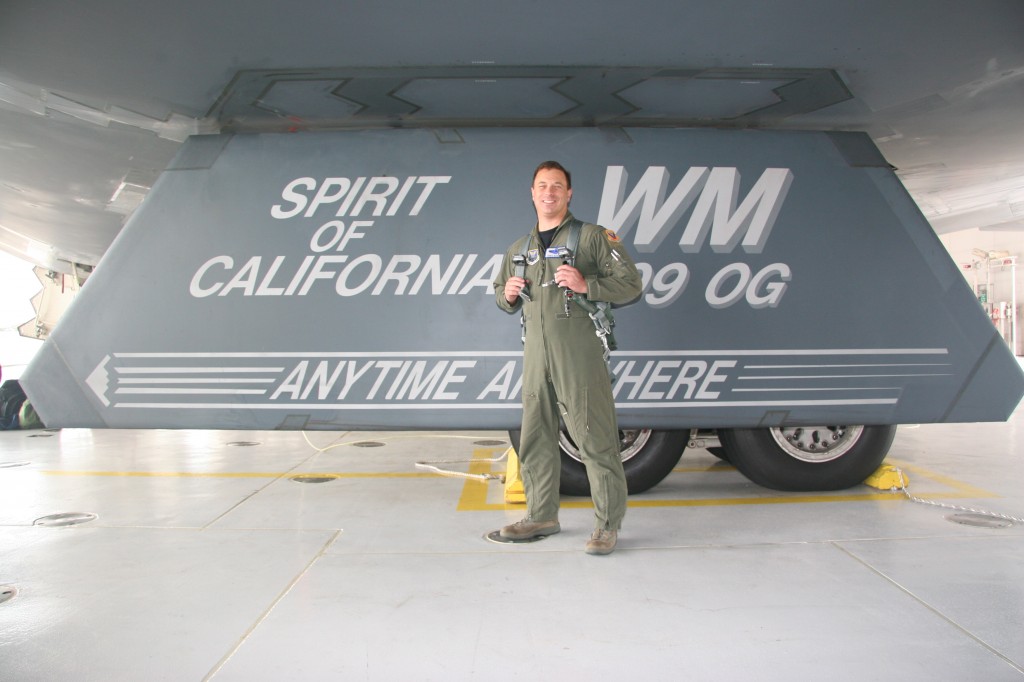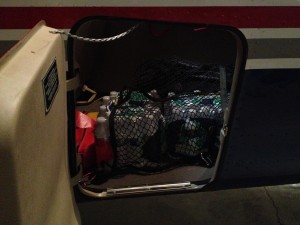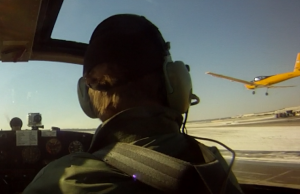These are the show notes to an audio episode. You can listen to the show audio by clicking here: http://traffic.libsyn.com/airspeed/AirspeedB2withPreRoll.mp3. Better yet, subscribe to Airspeed through iTunes or your other favorite podcatcher. It’s all free!
In 2010, Rod Rakic and I flew to Whiteman AFB near Knob Noster, Missouri (or very close thereto) to meet Lt Col Christopher “Cliff” DeVaughn, get a tower tour, and fly the B-2A Weapons System Trainer. It made an impression and I wrote it up in a blog post.
Shortly thereafter, Cliff retired from the Air Force and he and I hatched the idea of having him on the show to talk about the B-2. Almost everything about the B-2 is steeped in OPSEC (and we were both very interested in maintaining that OPSEC), so a long period of seeking clearances and working through PA and operations approvals ensued. The approvals came through and we recorded in January. Then, for only the second time in Airspeed’s history, the subject agency had security and PA personnel vet and approve the content before posting. (The other time was in 2007 and it involved NASA.)
If that sounds like a process that might lead to a pretty dry and superficial episode, you’d ordinarily be right. But, thanks to Cliff and the Air Force, this is a pretty rich and detailed look at the aircraft and the warriors who fly them. We talked about the aircraft, its flight characteristics, and its mission. And, more importantly, we talked about what it’s like to fly long-duration missions in one of the most important strategic weapons systems in the US inventory. All the way from the selection process through training and into combat. This is every bit as much about the men as the machines.
And so, here it is! Another podsphere and new-media first right here on Airspeed!
For more information about the US Air Force and officer recruiting programs, check out www.airforce.com.
You can follow Cliff on Twitter or check out his Facebook page.
____________________
Be sure to take advantage of Airspeed’s special offer from Audible.com! Click here and get a free audiobook as part of an Audible trial subscription. You get to choose from more than 100,000 audiobooks, Airspeed gets a few bucks, and everybody wins!
You can, of course, choose any audiobook you like, but Airspeed‘s suggested selection this time around is Neil DeGrasse Tyson’s Death by Black Hole, an anthology of some of Dr. Tyson’s most popular articles and other writings dealing with everything from spaghettification to the scourge of outdoor lighting. Neil doesn’t read it (as is obvious from the narrator’s screwups like pronouncing Saturn V as “Saturn Vee”), but it’s otherwise not hard to suspend disbelief and hear Dr. Tyson come through clearly.








